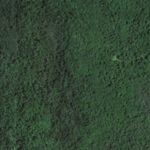As our world faces increasing environmental challenges, adopting eco-friendly practices is more important than ever. Eco-friendly living helps protect our planet, preserve natural resources, and create a healthier environment for people and wildlife alike. This article explores the importance of eco-friendly practices and provides practical ways to make positive changes in housing, transportation, gardening, and more, including ways to support local wildlife.
Why Eco-Friendly Living Matters for Wildlife
Human activity often disrupts natural habitats, forcing wildlife into smaller spaces, endangering species, and harming ecosystems. By living more sustainably, we help reduce pollution, conserve natural habitats, and protect biodiversity. Each of us can make a difference by being mindful of how our choices impact wildlife.
From protecting forests and oceans to supporting local biodiversity, our eco-friendly efforts allow animals to thrive in healthier, safer environments.
1. Eco-Friendly Housing
Our homes and buildings can have a large environmental impact, but eco-friendly housing can help reduce resource consumption and minimize harm to local ecosystems.
- Choose Wildlife-Friendly Landscaping: When designing outdoor spaces, use native plants that support local ecosystems and wildlife. Avoid lawns that require frequent watering and pesticides; instead, choose landscaping that provides food and shelter for birds, insects, and other wildlife.
- Limit Light Pollution: Artificial lighting can disturb natural behaviors in wildlife, especially nocturnal animals. Use outdoor lighting sparingly, install motion sensors where possible, and choose fixtures that minimize light pollution to create a wildlife-friendly environment.
- Green Building Materials and Design: Sustainable materials like bamboo, reclaimed wood, and recycled metal reduce the demand for new resources and lower habitat destruction. Incorporating green roofs and living walls also creates mini-habitats for birds and insects while improving insulation and air quality.
2. Reducing Transportation Impact
Transportation is a major source of greenhouse gas emissions and can disrupt wildlife habitats through road construction and pollution. Reducing our reliance on vehicles with high emissions and choosing eco-friendly transportation alternatives benefits the planet and its inhabitants.
- Reduce Vehicle Use in Sensitive Areas: When visiting parks and nature reserves, choose designated paths to prevent habitat disruption and avoid driving near fragile ecosystems. Walking, biking, or using public transport when visiting natural spaces also limits your ecological footprint.
- Choose Electric or Hybrid Vehicles: Electric vehicles emit fewer greenhouse gases and pollutants than conventional vehicles, reducing the impact on air quality and wildlife health. Clean air benefits all living beings and helps maintain ecosystems.
- Carpool and Use Public Transportation: Fewer vehicles on the road means less pollution, safer habitats, and reduced demand for new road construction that could disrupt wildlife areas.
3. Sustainable Gardening and Wildlife Support
Gardening is one of the most rewarding ways to practice eco-friendly living, offering opportunities to support biodiversity, conserve resources, and create wildlife-friendly habitats.
- Native Plants and Pollinator Gardens: Native plants provide essential food and habitat for local wildlife, including pollinators like bees, butterflies, and hummingbirds. Pollinator gardens support biodiversity by creating a safe space for these crucial species, which in turn helps maintain healthy ecosystems.
- Create Wildlife Habitats: Incorporate elements such as birdhouses, bee hotels, and butterfly gardens. These simple additions create mini-habitats where wildlife can thrive, especially in urban settings where natural habitats may be scarce.
- Avoid Pesticides and Chemicals: Conventional pesticides can harm beneficial insects, soil health, and water quality, impacting ecosystems far beyond your garden. Opt for natural pest control methods like companion planting, or encourage beneficial predators like ladybugs to control unwanted pests.
- Rain Gardens and Water Conservation: Rain gardens help manage stormwater runoff, prevent soil erosion, and create a habitat for wildlife. Choosing drought-resistant plants and collecting rainwater for gardening reduces strain on local water resources and creates sustainable landscapes that are resilient to climate changes.
4. Practical Tips for Eco-Friendly and Wildlife-Conscious Living
Transitioning to an eco-friendly lifestyle also involves being mindful of our broader impact on nature and wildlife. Here are some simple yet impactful ways to make eco-friendly choices with wildlife in mind:
- Reduce, Reuse, Recycle: Properly dispose of waste and recycle to minimize pollution in ecosystems. Litter and plastic waste can harm animals when ingested or entangle them, so reduce your plastic use and recycle responsibly.
- Minimize Water Waste: Excessive water consumption strains natural water supplies, which impacts fish and aquatic wildlife. Use water-saving fixtures, fix leaks, and consider installing a rain barrel to collect water for non-drinking uses.
- Limit Use of Harmful Chemicals: Avoid using chemicals like pesticides, herbicides, and synthetic fertilizers in and around your home. These can wash into waterways, harming aquatic life and contaminating drinking water for humans and animals alike.
- Support Ethical and Sustainable Products: Purchase from companies that prioritize sustainability and cruelty-free practices. Choosing eco-friendly products and minimizing single-use plastics can help reduce pollution and environmental degradation.
- Keep Pets Under Control Outdoors: Cats and dogs that roam freely can disturb or harm local wildlife. Keep pets indoors or in designated areas, especially near natural habitats, to protect local bird and small animal populations.
The Impact of Eco-Friendly Choices on Wildlife and Ecosystems
Living sustainably and making eco-friendly choices not only conserves resources but also protects the intricate balance of ecosystems where every species, including humans, has a role. A shift towards eco-conscious housing, transportation, and gardening helps create healthier environments that sustain diverse wildlife populations. Each small step we take to reduce our environmental impact contributes to a brighter, more resilient future for the planet and all its inhabitants.
By adopting eco-friendly practices, we become stewards of nature, ensuring that wildlife can continue to thrive alongside us. Making eco-friendly choices is a way of honoring our planet and everything that calls it home, helping create a world where both people and wildlife can coexist sustainably. 🌍🌱🐾





